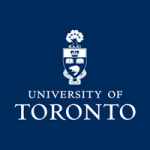This thesis investigates Chinggisid-Timurid conceptions of rulership and political community in relation to territory, focusing on Perso-Islamic Central Asia and Iran during the period 1370–1530. It also discusses the thirteenth-century Mongol-ruled world for backdrop, and highlights the distinctiveness of the said conceptions through comparisons with contemporaneous European and East Asian/Ming Chinese conceptions of the same. This is a study of a chapter in the history of “international states system” before the European model of international states system became the global standard.
The political culture of the Chaghatayids, Ilkhanids, and Timurids included conceptions of rulership and political community vis-à-vis territory that were rooted in a mix of Mongol and Perso-Islamic traditions. In the early thirteenth century, the Mongols conceived of a qan (khan) as leading an ulus, that is, a mobile demographic entity not defined by specific territory. Tājīk historians in Mongol service appear to have understood this, though a number of them also attributed certain territorial characteristics to ulus. The matter becomes more complicated when Chinggisid-Timurid chancellery documents/diplomatic letters are considered, as unlike their European and East Asian counterparts, these documents lacked straightforward claims of rulership over politico-administrative territory. At the same time, a certain representation of rulership over territories, in the form of “pādeshāhs of wilāyats,” can be found in the histories, but this was evidently neither a formal nor a pronounced representation. By 1402, the Timurids no longer recognized a Chinggisid khan as their overlord, but they also did not clearly articulate what this meant in terms of the political community to which they belonged—especially, did they still belong to the ulus of Chaghatay? This study seeks answers to a basic question concerning the Chaghatayids, the Ilkhanids, and especially the fifteenth-century Timurids: “What was their country?”

